Looking for information about Rose Painted Calathea care, propagation, and more? You’ve come to the right place! In this article, we will answer some of the most common questions about this beautiful plant. We’ll provide tips on how to care for your Rose Painted Calathea, how to propagate it, and more. So whether you’re a beginner or an experienced gardener, you’ll find something useful here!
Calathea Roseopicta Overview
Rose Painted Calathea is a beautiful plant that originates from the tropical forests of South America. It’s part of the Marantaceae family, which includes other popular houseplants like Maranta Leuconeura (Prayer Plant) and Stromanthe sanguinea (Triostar). Rose Painted Calathea is a relatively easy plant to care for, and it’s a great choice for both beginners and experienced gardeners alike!
One of the most distinctive features of Rose Painted Calathea is its colorful leaves. The leaves are green with pink or purple markings, which makes this plant very eye-catching. Rose Painted Calatheas also have a unique feature called “nastic movement.” This means that the leaves will fold up at night, and then open back up again in the morning.
If you’re looking for a plant that is both beautiful and interesting, Rose Painted Calathea is a great choice! But before you add one to your collection, there are a few things you should know about Rose Painted Calathea care. In this article, we’ll cover everything you need to know about caring for your Rose Painted Calathea, including watering, light requirements, fertilizing, and more.[2]
Calathea Roseopicta Varieties
There are several varieties of Calathea roseopicta, all with slightly different markings on their leaves. The most common variety is the ‘Dottie’, which has round, dark green leaves with light green and pink dots.
Other popular varieties include the ‘Medallion’, which has large oval-shaped leaves with a pink and greenish-yellow pattern in the center, and the ‘Wrightii’, whose leaves are similar to the Medallion but have a more pronounced pink hue.[2]
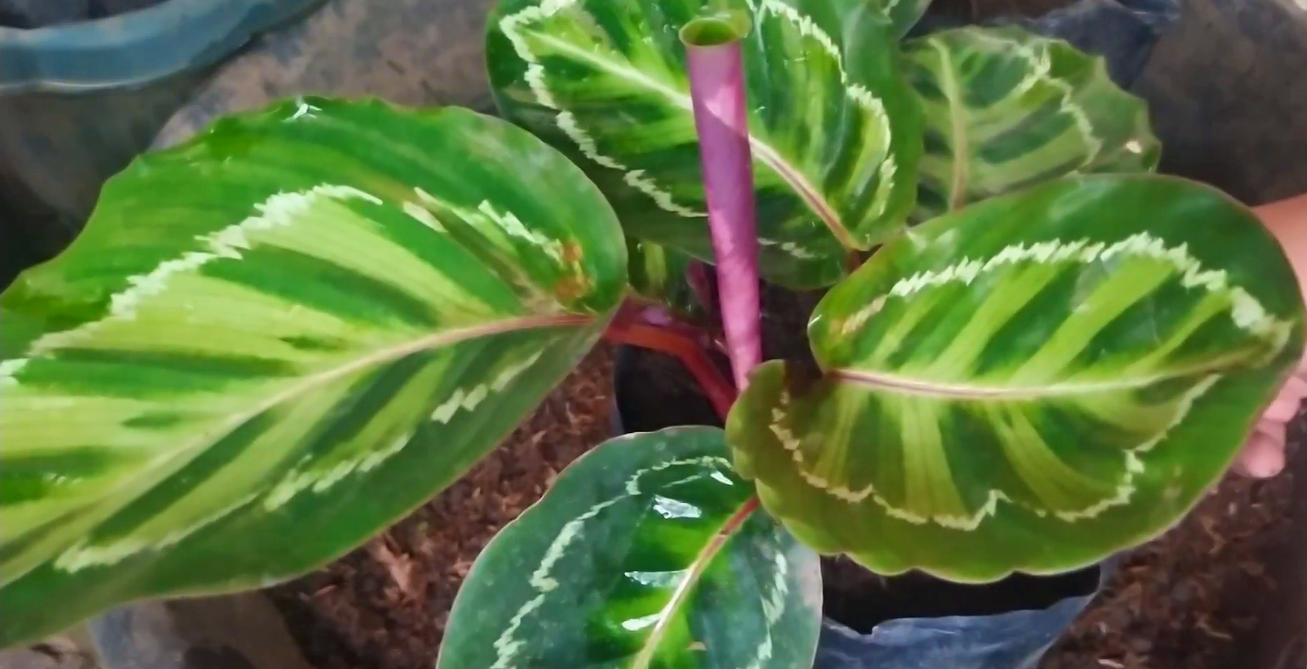
Growing Calathea roseopicta plants
Calathea roseopicta plants are not difficult to grow, but they do have some specific requirements.
Just like all Calatheas, Rose Painted Calathea enjoys high humidity. If the air in your home is dry, you’ll need to take steps to increase the humidity around your plant. One way to do this is to group several plants together so they can create their own microclimate. Another way to increase the humidity is to use a humidifier or pebble tray.[3]
High Humidity
If you live in an arid climate, you’ll need to take extra steps to ensure that your Rose Painted Calathea gets the humidity it needs. misting it regularly, using a humidifier, or grouping it with other plants that help increase the humidity around it.
Rose Painted Calatheas are native to tropical rainforests, so they’re used to high humidity and won’t do well in dry conditions. If the air around your plant is too dry, the leaves will start to turn brown and curl up at the edges.
To prevent this, make sure you keep an eye on the moisture levels in both the soil and the air around your plant. If the air is too dry, try misting it regularly, using a humidifier, or grouping it with other plants that help increase the humidity around it.
Flowering
The Rose Painted Calathea is a beautiful houseplant that features vibrant, green leaves with pink and purple stripes. The flowers are small and white, and they bloom in the summertime. This plant is native to Brazil, and it’s a member of the Marantaceae family.
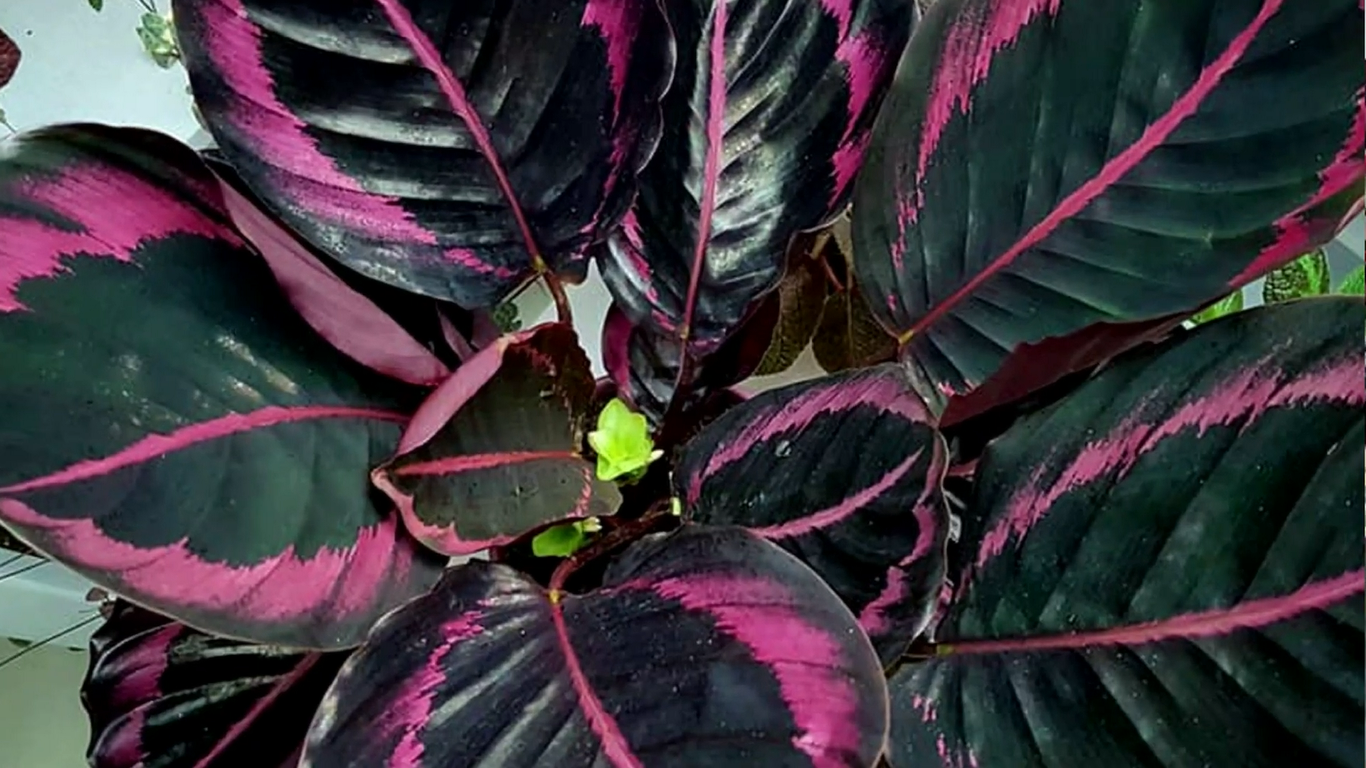
Light
Rose Painted Calathea plants love bright, indirect sunlight. If you can’t provide them with enough natural light, consider using grow lights. Keep in mind that too much direct sunlight will cause the leaves to fade and may even scorch them.[1]
Location
Rose Painted Calathea are native to the tropical regions of South America. They are typically found in Brazil, Colombia, and Peru. Rose Painted Calathea can also be found in the tropical forests of Central America.[1]
Temperature
The Rose Painted Calathea prefers warm temperatures and will do best in a range of 70-85 degrees Fahrenheit. If the temperature drops below 60 degrees, the leaves may start to turn brown and drop off. Conversely, if the temperature gets too high, the leaves will begin to curl.
There are a few things you can do to maintain a consistent temperature for your plant. First, try to avoid placing it near any drafty windows or doors. Second, consider using a humidifier in the room where your Rose Painted Calathea is located. This will help to raise the ambient humidity levels and prevent the air from becoming too dry.
Finally, don’t forget that plants are living creatures and they can experience stress just like we do. If you make sudden or drastic changes to the temperature in their environment, it can cause them to go into shock. So, if you need to make a change, do it gradually over the course of a week or so to give your plant time to adjust.[1]
Soil
The Rose Painted Calathea prefers rich, organic soil that is well-draining. A good potting mix for this plant would be two parts peat moss to one part perlite. If your pot does not have drainage holes, you will need to add them or use a different potting mix.
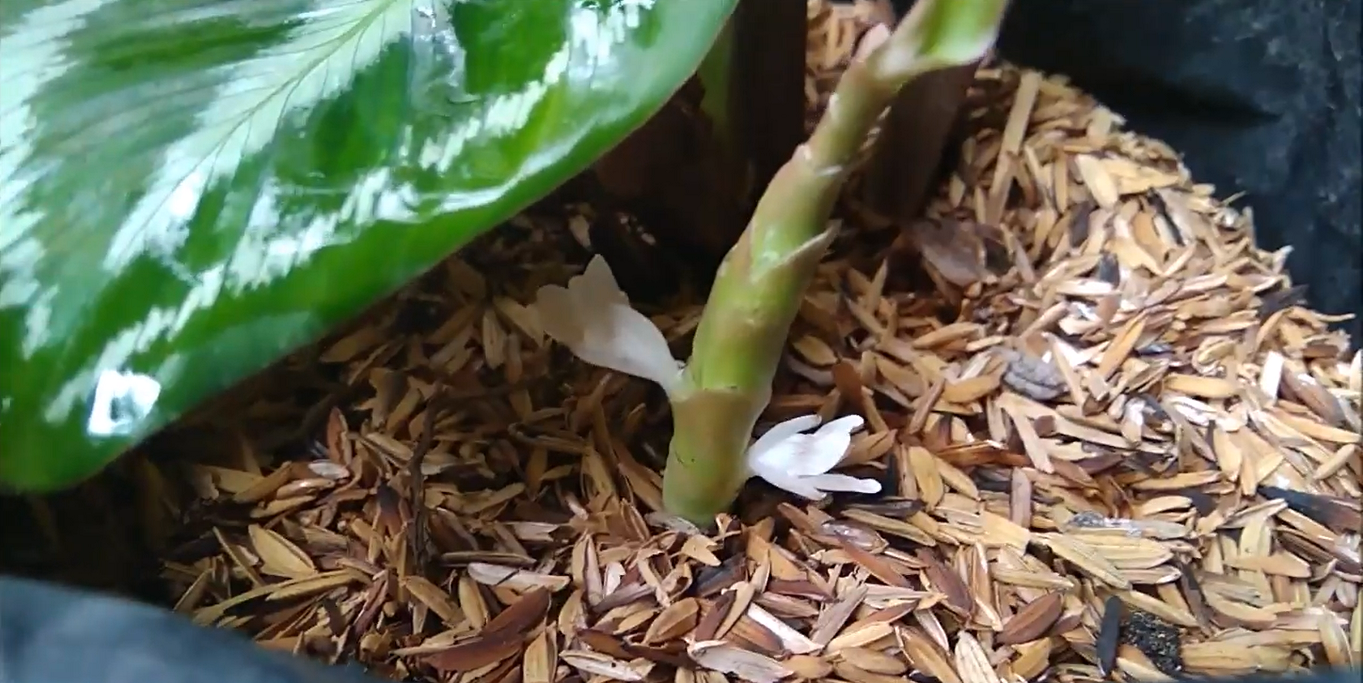
To make sure your plant is getting the nutrients it needs, you can fertilize every other week during the growing season with an all-purpose fertilizer. Just be sure to dilute the fertilizer to half strength so you don’t damage the roots.[1]
Potting
When potting up your Rose Painted Calathea, use a well-draining potting mix with plenty of organic matter. Sphagnum peat moss is a great addition to improve drainage. I like to add about 30-50% perlite to my mixes as well.
The size of the pot will depend on the size of your plant. A rule of thumb is to choose a pot that is only one size larger than the current pot. This will help prevent root rot and keep your plant healthy.
Calatheas are sensitive to fluoride and other chemicals commonly found in tap water. For this reason, it’s important to use filtered or distilled water when watering your plants.[1]
Watering Calathea Roseopicta
Calathea Roseopicta, like most tropical plants, enjoy moist soil. The best way to water your Calathea is to use the finger test. Stick your index finger about an inch into the potting mix- if it feels dry to the touch, it’s time to water. If it’s still damp or wet, give it a few more days. Overwatering is just as detrimental as underwatering, so be sure not to drench the soil and leave the plant sitting in water. Water until it starts draining out of the bottom of the pot and then empty out any excess that remains in the saucer. Tropical plants are native to humid climates so they love moisture in the air as well. Use a pebble tray or humidifier to raise the humidity around your plant if you live in a dry climate.[1]
Calathea Roseopicta Fertilizer
Fertilize your Calathea roseopicta every two weeks during the growing season with a half-strength solution of an all-purpose liquid fertilizer. Be sure to flush the soil with clean water monthly to prevent salt buildup. During the winter months, reduce fertilization to once a month.
Calathea roseopicta are not heavy feeders and too much fertilizer can cause leaf burn or yellowing leaves. If you see these symptoms, reduce the frequency of fertilization. Over time, your plant will tell you what it needs! Just be sure to keep an eye on those leaves![1]
Propagating Calathea Roseopicta
Calathea roseopicta can be easily propagated by division. This should be done in the spring or summer when the plant is actively growing. Simply take a sharp knife and divide the root ball into two or three sections. Each section should have several leaves and its own roots. Place the divisions into pots filled with fresh potting mix and water well. Keep the soil moist but not soggy and place it in a warm, bright spot out of direct sunlight until new growth appears. Once new growth appears, you can gradually move your plant to a brighter spot. Just be sure to do this slowly so that your plant doesn’t go into shock.[1]
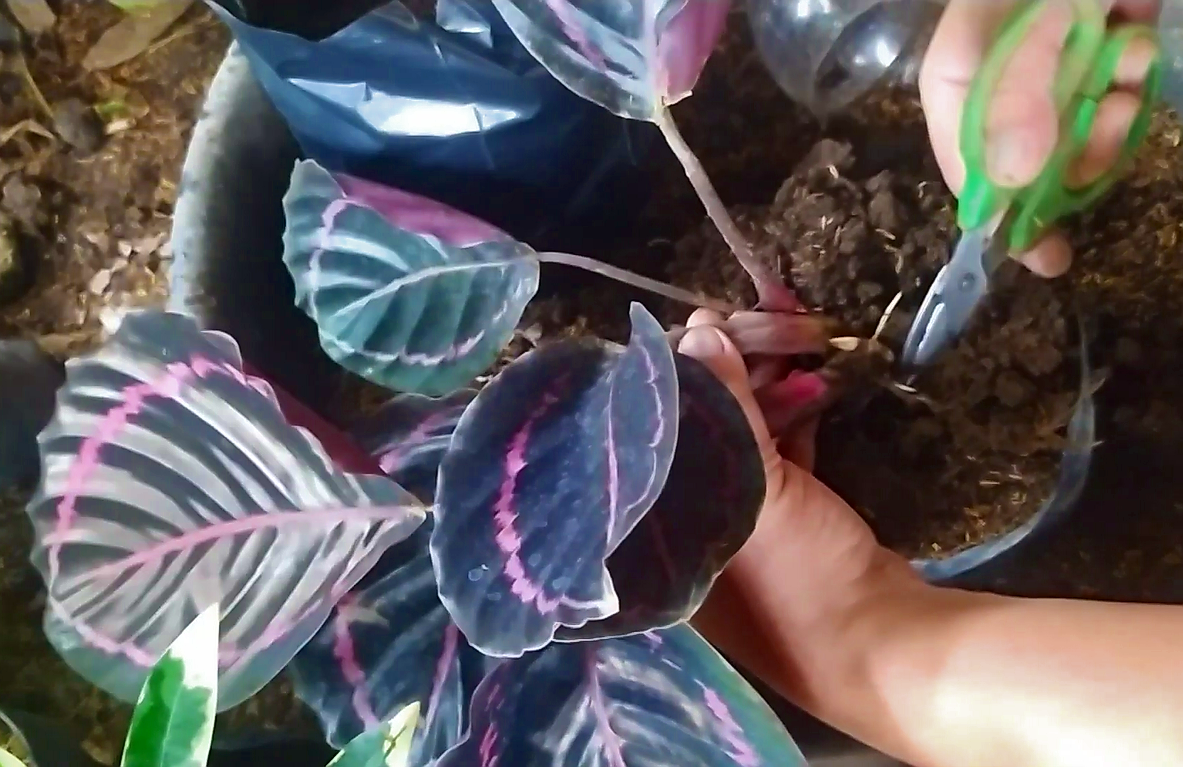
Toxic
Pets are not the only ones at risk from this plant; humans can also suffer ill effects if they come in contact with it. The sap of the Rose Painted Calathea can cause skin irritation and swelling. If you are prone to allergies, it is best to avoid this plant altogether.
Even though the Rose Painted Calathea is toxic, it is still a popular plant. Its beautiful leaves make it a desirable addition to any home, but its toxicity means that it is not the best choice for everyone. If you are considering adding this plant to your home, be sure to research all of the risks involved first.[3]
Basic Pruning
Pruning is a crucial part of keeping your Rose Painted Calathea healthy and happy. While it may seem daunting at first, with a little practice, it’s easy to get the hang of it! Here are a few tips to get you started:
- Always use clean, sharp pruning shears to avoid damaging the plant.
- Cut away any dead or dying leaves, as well as any that are significantly damaged.
- Be sure to prune back any leggy stems to encourage bushier growth.[2]
How To Report Calathea Roseopicta
If you’re lucky enough to have a Rose Painted Calathea in your home, it’s important to know how to properly take care of it! Here are some tips on care and propagation:
Calathea Roseopicta Problems & Pests
Leaf Spots and Blight
Calathea roseopicta is susceptible to a few common fungal diseases, particularly if it doesn’t have enough humidity. The most common are leaf spot and blight, both of which can cause brown or black spots on the leaves. If you see these symptoms, increase the humidity around your plant and make sure it’s not sitting in water. You may also need to treat with a fungicide.[3]
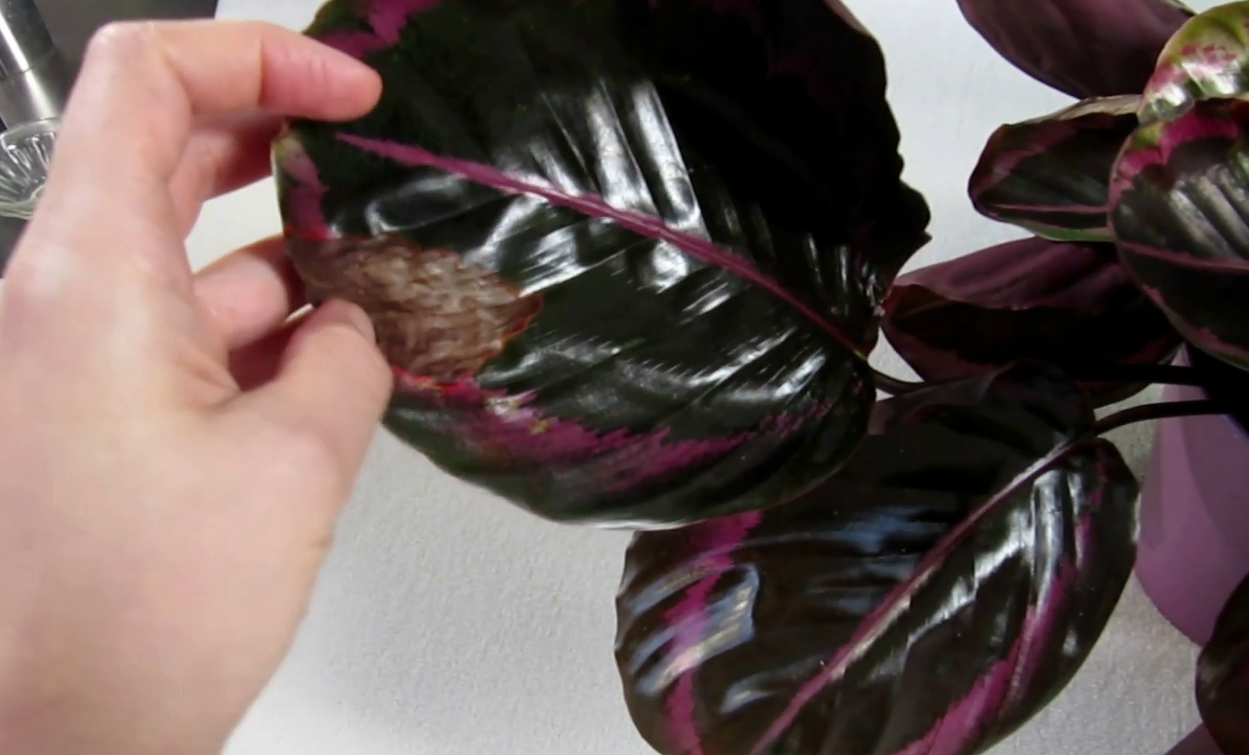
Browning of Leaf Tips
One of the most common problems people have with their Rose Painted Calathea is browning of the leaf tips or edges. This can be caused by a number of factors, including too much sun, too little humidity, or even chemicals in your tap water. If you notice this happening to your plant, try increasing the humidity around it and/or filtered water for watering.
Another cause of browning leaf tips is simply over-watering. When roots are sitting in water they can start to suffocate and die which will cause the leaves to turn brown and eventually drop off. Be sure to allow your plant’s soil to dry out completely between watering and never leave it sitting in a saucer of water.[3]
The Cucumber Mosaic Virus
The cucumber mosaic virus is a common disease that can affect your Rose Painted Calathea. This virus is spread by aphids and causes the leaves of your plant to become mottled and discolored. The best way to prevent this virus from infecting your plant is to keep an eye out for aphids and remove them as soon as possible. You can also try spraying your plant with a diluted solution of water and vinegar.[3]
Bugs and Pests
One of the most common problems with Rose Painted Calathea is pests. Mealybugs, spider mites, and scale are all attracted to this plant. If you see any of these insects on your plant, you should take immediate action to get rid of them. The best way to do this is by using a cotton swab dipped in rubbing alcohol and lightly dabbing the insects. You can also use an insecticidal soap or neem oil if the infestation is severe.
Mealybugs are small, white insects that feast on plant sap. They can be found on the stems and leaves of your Rose Painted Calathea. These bugs excrete a sticky substance called honeydew which can attract ants and promote the growth of sooty mold.
Spider mites are tiny spider-like creatures that spin webs on the leaves of plants. These pests suck the sap from the leaves, causing them to turn yellow and eventually die. Spider mites are especially fond of Calathea plants.
Scales are small, brown insects that attach themselves to plant stems and leaves. They feed on plant sap, which can cause the leaves to turn yellow and eventually die. Scale can also produce a sticky substance called honeydew, which can attract ants and promote the growth of sooty mold.[3]
FAQ
How do you promote growth in Calathea?
There are a few things you can do to help your Calathea grow:
- Make sure it’s getting enough light, but not too much direct sunlight.
- Water regularly, but don’t let the soil get soggy.
- Fertilize about once a month during the growing season.
- Pruning will also encourage new growth. Just snip off any brown or yellow leaves at the base.
How do you keep Calatheas happy?
Calatheas are tropical understory plants, so they like bright indirect sunlight and high humidity. If your home isn’t naturally humid, you can raise the humidity around your Calathea by grouping it with other plants, running a humidifier, or placing it on a pebble tray.
How do I make Calathea more leaves?
If your Calathea has been looking a little sparse lately, don’t worry – there are a few things you can do to encourage new growth. First, make sure that it’s getting enough light – but not direct sunlight, which can scorch the leaves. Second, water it regularly, but allow the soil to dry out somewhat between waterings. And finally, give it a fertilizer boost every month or so. With a little TLC, your Calathea should start putting out new leaves in no time!

Where should I place my Calathea?
Calathea like bright, indirect light. They will tolerate lower light levels, but the leaves may become slightly less vibrant. If your plant is getting too much light, you’ll notice the leaves starting to fade or bleach in color.
Calathea are native to tropical regions of South America, so they like warm temperatures. The ideal range for Calathea is between 65-80 degrees Fahrenheit. They do not like drafts, so if you have a particularly cool spot in your home, this might not be the best plant for that location.
Should I cut dead leaves off Calathea?
Yes, you should cut dead leaves off your Calathea plant when you see them. Not only does it make the plant look nicer, but it also helps it to focus its energy on new growth. Dead leaves can also harbor pests and diseases, so it’s best to get rid of them as soon as possible.
To remove a dead leaf, simply snip it off at the base with a sharp pair of scissors or pruning shears. Be sure to disinfect your cutting tool before and after use to prevent the spread of disease.
How do you know if Calathea needs water?
The most common sign that your Calathea needs water is if the leaves start to droop. This is a plant that loves moisture, so make sure you’re watering it regularly and not letting the soil dry out. If the leaves are wilting or turning brown, that’s a sure sign that it needs more water.
Another good way to tell if your Calathea needs water is to feel the soil. If it feels dry to the touch, it’s time to give it a drink. I like to water my plants until the water comes out of the drainage holes at the bottom of the pot. This ensures that the roots are getting enough moisture without sitting in wet soil, which can lead to root rot.
Useful Video: How to Grow and Care Red Calathea / Calathea / Prayer Plant || Fun Gardening
Conclusion
That’s everything you need to know about caring for Rose Painted Calathea! With regular watering, humid conditions, and bright but indirect light, this plant will thrive. Propagating is also a relatively simple process, so if you want more plants you can easily do that as well. Have any questions or tips of your own? Leave them in the comments below!
Thank you for reading! I hope this article was helpful. If you have any further questions or tips of your own about caring for Rose Painted Calathea, please leave them in the comments below. Happy gardening!
References:
- https://houseplantcentral.com/calathea-roseopicta-care-info/
- https://smartgardenguide.com/calathea-roseopicta-care/
- https://properlyrooted.com/calathea-roseopicta-the-rose-painted-calathea/










Leave a Review